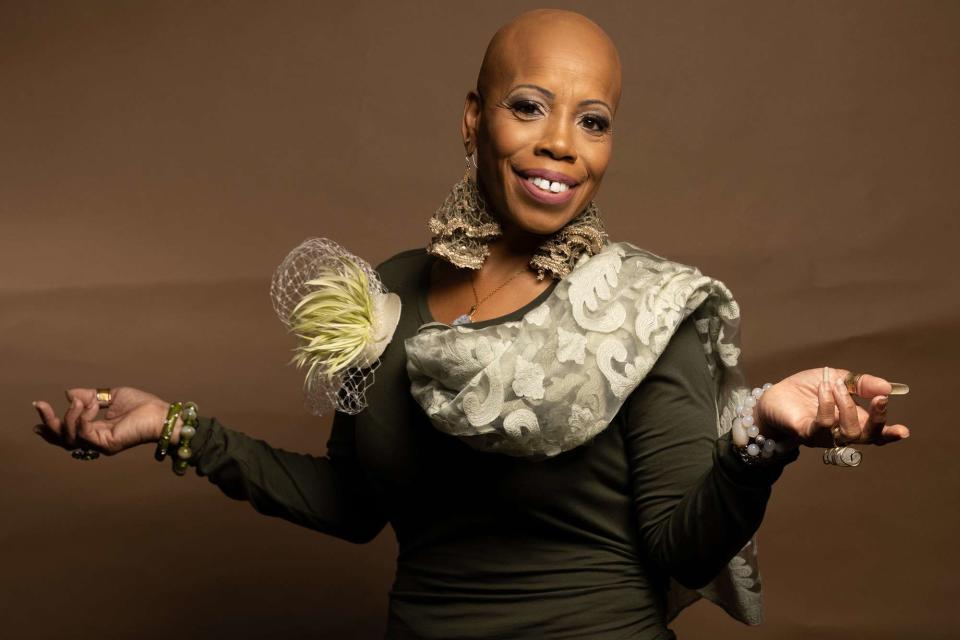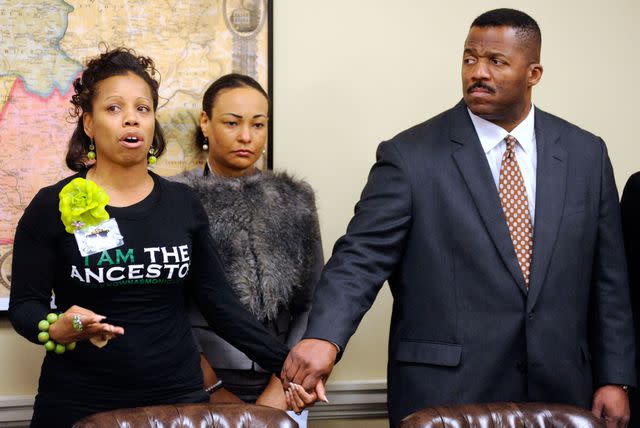How 'the Longest Living Jane Doe' Learned Her True Identity After Years of Being Trafficked and Abused
Monique Smith, née Simboli Ruffin, spent decades searching for her real identity

Keston De Coteau
Monique SmithAs a tireless advocate for missing and abducted children, Monique Smith’s days are full. Whether she's spending time talking to community members, championing legislation, raising awareness about endangered children, the Baltimore businesswoman is always available to lend her voice.
“It’s all day long,” the mother of four tells PEOPLE. “Even though I'm not a nonprofit, people have known that I've been doing this for 20 years. Every voice, every action, every ounce of support helps. Everyone should be a social responsibility agent, period. It's just like when you travel, you see a bag, what do you do? You alert authorities that there's a bag that was abandoned somewhere. So, let's do that when it comes to missing children. We're in this together.”
It's a cause that's especially close to Smith’s heart: For decades, she herself was an unidentified missing person. She's known as "The Longest Living Jane Doe."
“It's important because I have so many lived experiences of abuse," she says. “I have been molested. I have been raped by multiple people. I've been tossed around, passed around. I've run away. I've got caught up in the trafficking. I could see how easy people can manipulate you and groom you and just do whatever they need with you."
She adds, "And it's growing in an alarming way. We want people to grow up and have healthy lives, enriched lives, be productive on their own terms, not under the hands of someone else.”
Raised by the woman she believed was her mother in West Baltimore, her childhood was marked by beatings and severe abuse.
“This woman would find a reason to beat me just because the sun came up,” she says. “There was no 'Mommy and me,' there were no tea parties, there's no, 'Let's dress alike,' or, 'Let's go over to the park.' There were no trips to the playground. There was no, 'Let's go in the kitchen and make muffins.'"
It wasn’t until she was in her late 20s, when the woman who raised her continued to refuse to hand over her birth certificate, that she began digging.
“I had no paperwork proving who I was,” she says. “It originally started at a point where I had to do something with my children, and I couldn't even prove that I was their mother, because I never saw my birth certificate."
Years of Research Reveal Shocking Truth
Her quest to find answers became a decades-long journey.
Want to keep up with the latest crime coverage? Sign up for PEOPLE's free True Crime newsletter for breaking crime news, ongoing trial coverage and details of intriguing unsolved cases.
Smith, the author of I Am The Ancestor: Before I Die, I Must Share My Story, reached out to Board of Education and Social Security Administration.
“When the information came, the inconsistencies floored me,” she says. “One document said I was born in 1968, one said '67, one said 1965. Another document said that my name was Moniqua. One said it was Symbolie. Another one said my last name was Rodriguez. One said Terry.”

AP Photo/Steve Ruark
Monique Smith, leftSmith says she believes the woman who raised her “was trying not to have me found,” she says. “She would put her name in different, my name in different. How could anybody find me if she kept changing the information? She did it three separate times.”
After talking to family members in Baltimore, she started to realize she wasn’t who she thought she was. A woman she knew as her grandmother told Smith she was surprised that the woman Smith knew as her mother hadn't told Smith the truth — but she didn't specify what that truth was.
Undeterred, Smith reached out to the police as well as the Salvation Army missing persons program, and submitted her DNA into missing person databases and genetic genealogy sites for answers. She posted missing persons flyers and reached out to police. “I was hitting everything,” she says. “Unsolved Mysteries. I was hitting the National Center for Missing and Exploited Children. I was hitting adoption agencies. Everything was coming up zero. I was spending thousands of dollars with private detectives and attorneys, you name it."
It wasn't until a Maryland detective, who was helping her uncover her real identity, reached out to genetic genealogist CeCe Moore that Smith finally hit pay dirt.
Moore revealed “my mom's name, my potential dad's name. The sisters' names. I couldn't even believe it. It was all right there. The hospital that I was born in, the variations of my mom's name.”
Her DNA linked her to Margaret Conyers, a mother of six who lived in the Bronx. Conyers died at the age of 34 of a drug overdose.
Her biological mother, she says, "was a teenage mom. When she was having kids at 15, 16, I don't even think she was home. I don't think she was with her mom and her dad. I don't even think my mom probably went to school after a certain age.”
After connecting with her long lost sisters, one of them told her that Smith had been “on the bed one day, and she said one minute I was there, and another minute I was gone. [The sister] never saw me again.”
Smith says she still isn't sure how she came to be with the woman who raised her. She believes she was most likely abducted but wonders if her biological mother may have played a role.
“I don't know what roles were played,” she says. "Did my mother play a role? Did she not play a role? Did my mother know? Did she not know? Was it something that they agreed to? I don't know what happened.”
She later learned that the woman she'd long known as her mother had brought her to her home in Baltimore when she was 1 year old. The woman then left her at that home and returned to the Bronx, but then came back to Baltimore two years later.
A reporter from the The Baltimore Banner, a publication that has covered Smith's story, later helped connect Smith with the office of Vital Records in New York where she received for the first time a copy of her birth certificate with her birth name" Simboli Ruffin. [Ruffin is her father's last name].
Despite having the document, Smith still has to petition the court to change her name. She plans to do so in the future.
“I'm not done with my journey,” she says. “I told my kids, ‘I ain't going to die with no fake name on my tombstone, if possible.’"
Under special provisions, Smith was able to get a passport, and plans to travel with family members for the first time in 2024.
“It's been a journey,” she says. “I use my story so much in hopes of people being educated and that they become instant advocates. The minute that you hear all missing children are dead, keep looking. That kind of gets people the energy that they need to join and participate or get a conversation about awareness. That to me is so important. That's why I keep my message that people don't give up hope. All missing children aren't dead.”
For more People news, make sure to sign up for our newsletter!
Read the original article on People.

